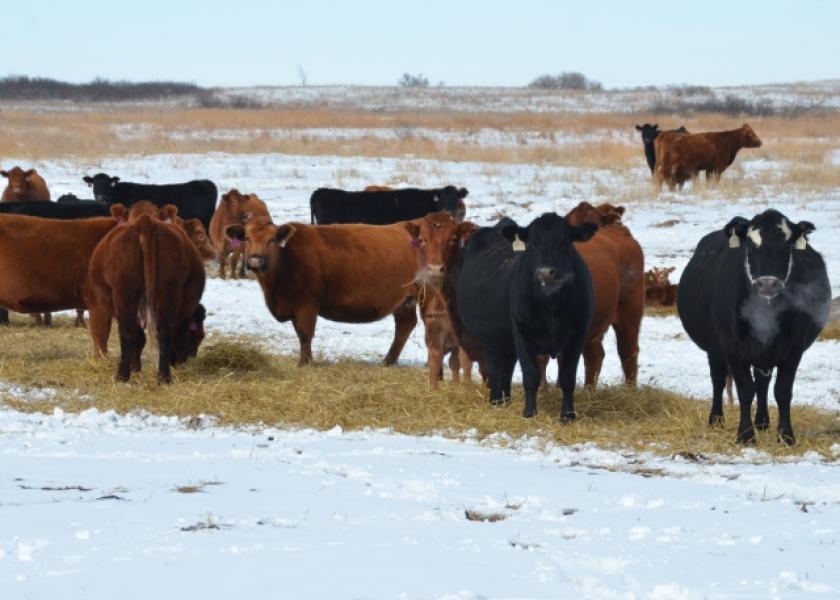Cold Weather Nutrition for Beef Cows

Just before Christmas, I told my husband that I wished the weather was more characteristic of the season. “Be careful what you wish for”, he said. As you all know, winter came to us in full force on January 1st with bitterly cold temps and a little moisture for some. This recent weather brings to mind the extra nutrition required by cattle in cold weather. One can’t forget the February 2021 cold snap and the difficulties that cattle had maintaining body condition during that time.
There are many things that impact the ability of cattle to tolerate cold and inclement weather. Haircoat is the first aspect that makes a great deal of difference in cattle’s ability to withstand cold temperatures. The amount of moisture and how wet the haircoat is also impacts cold tolerance. Rainfall, melting snow or ice increases cold stress. In addition, cattle in lower body conditions (less than BCS 5), have less tolerance for cold. All cattle will need extra feed to maintain body condition and manage stress from the cold, but those needs may vary from one group to the next.
So how much extra nutrition are we talking about? The Mesonet Cattle Comfort Advisor is an excellent tool for getting an idea of cold conditions and the impact they have on cattle performance. According to the Mesonet Cattle Comfort Advisor, a cows energy requirement increases 1% for each degree the cattle comfort index is below 32. This energy need would double to 2% if the animal is wet to the skin. Let’s look at a realistic example. At 1:30 pm on January 6, the cattle comfort index was 11 degrees in Kingfisher, OK. As many will recall, this was a dry cold with no moisture. According to the increased energy requirement of 1% (no moisture), cattle would need an additional 21% energy to maintain body condition (32°-11° = 21° x 1%= 21%).
So how much would producers need to feed to meet this increased requirement? A producer feeding 20% cubes to gestating cows would need to provide an additional 3.5 – 4 pounds of cubes daily to maintain body condition. Lactating cow’s energy requirement is much higher and therefore they will need an additional 4.5-5 pounds 20% cubes daily. Increasing feeding allotments like this could cause some digestive upset if fed all at once so it may be beneficial to increase feeding at a lower level before cold weather strikes and for a few days after the cold snap to recover some energy loss. Also, cows that are fed just twice or three times per week may benefit from feeding more often to distribute higher feeding levels. A higher quality hay can also bridge the energy gap in these situations, but it is helpful to know the hay quality and how much is being provided.







